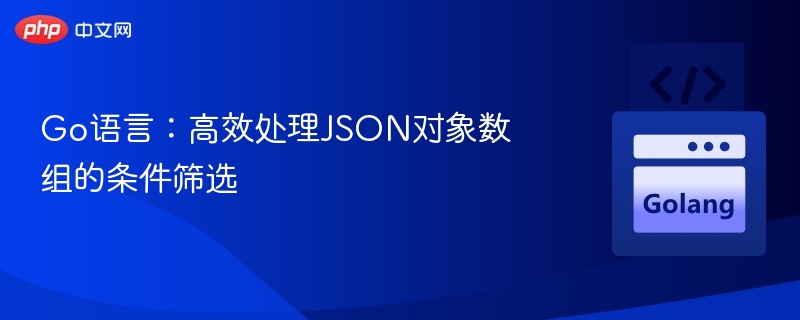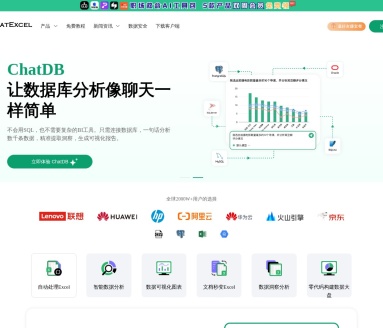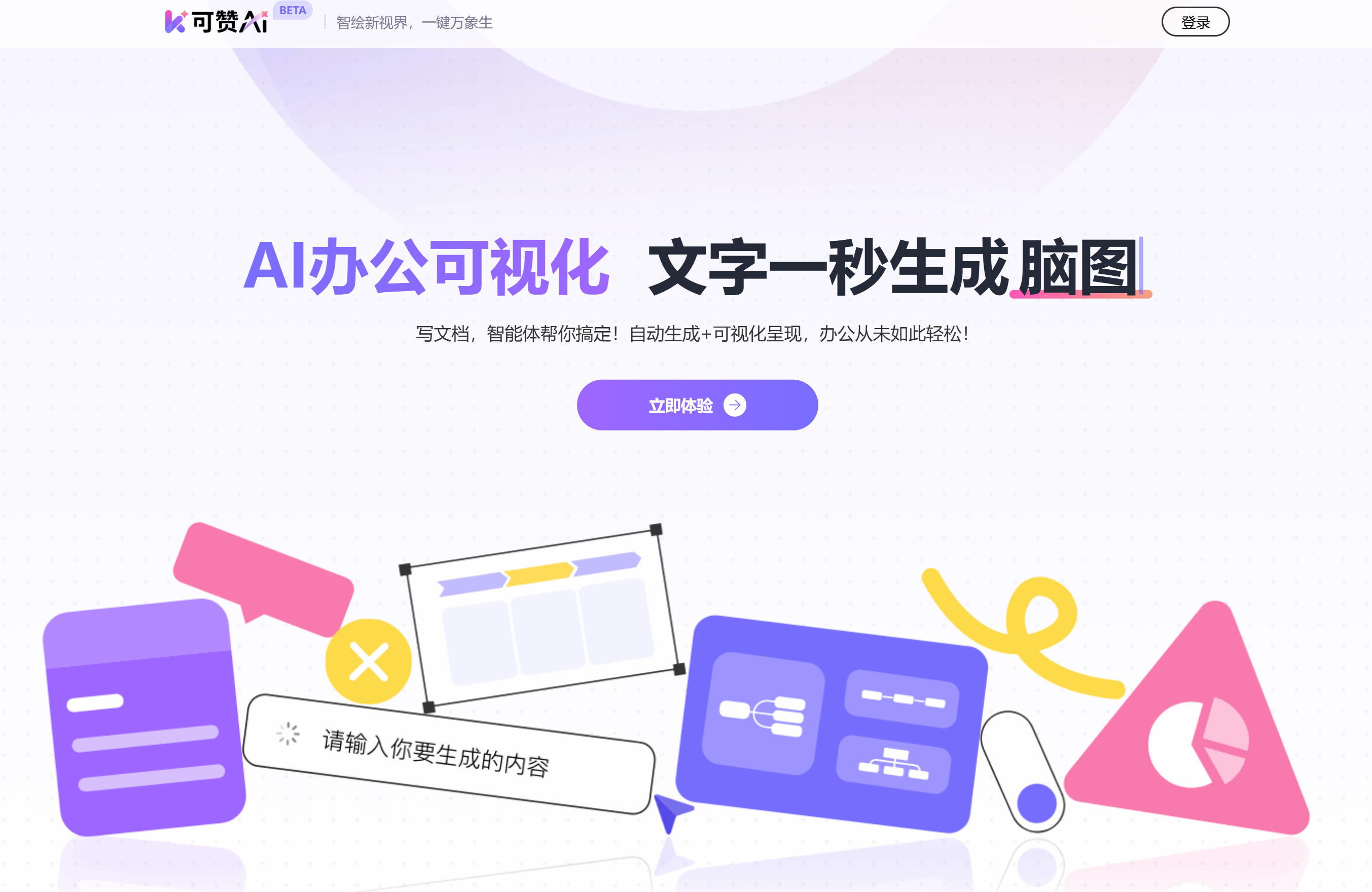Golang学习之基于OpenCart的Web应用程序开发
从现在开始,我们要努力学习啦!今天我给大家带来《Golang学习之基于OpenCart的Web应用程序开发》,感兴趣的朋友请继续看下去吧!下文中的内容我们主要会涉及到等等知识点,如果在阅读本文过程中有遇到不清楚的地方,欢迎留言呀!我们一起讨论,一起学习!
Golang学习之基于OpenCart的Web应用程序开发
随着Internet技术的不断发展和普及,Web应用程序的开发越来越受到人们的关注,而Golang作为一种快速,高效的编程语言,也越来越受到Web开发者的青睐。本文将介绍如何基于OpenCart开发一个Web应用程序。
OpenCart是一款免费开源的电子商务平台,它使用PHP作为开发语言,提供了强大易用的电子商务功能,如商品管理、订单管理、支付处理、物流管理等。但是,PHP作为一种解释型语言,其执行效率较低,无法满足高并发、大数据量的Web应用程序的开发需求。此时,Golang作为一种编译型语言,具有比PHP更快的执行速度和更好的并发能力,因此可以作为OpenCart的优秀替代品。
在本文中,我们将基于OpenCart开发一个在线商城应用程序,该程序使用Golang作为后端语言,使用MySQL作为数据存储,实现商品展示、搜索、购买、订单管理等功能。本文主要包括以下几部分内容:
- 数据库设计
- App后端开发
- API接口设计
- App前端开发
- 数据库设计
在我们的应用程序中,我们需要存储商品数据、用户数据、订单数据等信息。我们设计一个数据库,并创建相应的表,来管理这些数据。
首先,我们创建一个数据库ocdb(OpenCart数据库),并定义商品、用户、订单三个表。
商品表:
CREATE TABLE product (id int(11) NOT NULL AUTO_INCREMENT,name varchar(255) NOT NULL,price decimal(10,2) NOT NULL,description text,image varchar(255) NOT NULL,
PRIMARY KEY (id)
) ENGINE=InnoDB DEFAULT CHARSET=utf8;
用户表:
CREATE TABLE user (id int(11) NOT NULL AUTO_INCREMENT,username varchar(50) NOT NULL,password varchar(255) NOT NULL,email varchar(255) NOT NULL,
PRIMARY KEY (id)
) ENGINE=InnoDB DEFAULT CHARSET=utf8;
订单表:
CREATE TABLE order (id int(11) NOT NULL AUTO_INCREMENT,user_id int(11) NOT NULL,product_id int(11) NOT NULL,quantity int(11) NOT NULL,total decimal(10,2) NOT NULL,status tinyint(1) NOT NULL DEFAULT '0',
PRIMARY KEY (id)
) ENGINE=InnoDB DEFAULT CHARSET=utf8;
在以上表中,商品表中包含商品的名称、价格、描述、图片等信息;用户表中包含用户的用户名、密码、电子邮件地址等信息;订单表中包含订单的用户ID、商品ID、数量、总价及订单状态等信息。
- App后端开发
在后端开发中,我们需要实现各种功能API接口。首先,我们需要创建一个名为app的Go模块。在app模块中,我们编写服务器程序逻辑。
将以下代码保存为app.go文件。
package main
import (
"database/sql"
"encoding/json"
"fmt"
"log"
"net/http"
_ "github.com/go-sql-driver/mysql"
)
type Product struct {
ID int `json:"id"`
Name string `json:"name"`
Price float32 `json:"price"`
Description string `json:"description"`
Image string `json:"image"`
}
type User struct {
ID int `json:"id"`
Username string `json:"username"`
Password string `json:"password"`
Email string `json:"email"`
}
type Order struct {
ID int `json:"id"`
UserID int `json:"user_id"`
Product Product `json:"product"`
Quantity int `json:"quantity"`
Total float32 `json:"total"`
Status int `json:"status"`
}
func main() {
http.HandleFunc("/api/products", getProducts)
http.HandleFunc("/api/users", getUsers)
http.HandleFunc("/api/orders", getOrders)
http.HandleFunc("/api/order/create", createOrder)
log.Fatal(http.ListenAndServe(":8080", nil))
}
func getProducts(w http.ResponseWriter, r *http.Request) {
db, err := sql.Open("mysql", "root:password@tcp(127.0.0.1)/ocdb")
if err != nil {
log.Fatal(err)
}
defer db.Close()
rows, err := db.Query("SELECT * FROM product ORDER BY id DESC")
if err != nil {
log.Fatal(err)
}
defer rows.Close()
products := []Product{}
for rows.Next() {
product := Product{}
err := rows.Scan(&product.ID, &product.Name, &product.Price, &product.Description, &product.Image)
if err != nil {
log.Fatal(err)
}
products = append(products, product)
}
w.Header().Set("Content-Type", "application/json")
json.NewEncoder(w).Encode(products)
}
func getUsers(w http.ResponseWriter, r *http.Request) {
db, err := sql.Open("mysql", "root:password@tcp(127.0.0.1)/ocdb")
if err != nil {
log.Fatal(err)
}
defer db.Close()
rows, err := db.Query("SELECT * FROM user ORDER BY id DESC")
if err != nil {
log.Fatal(err)
}
defer rows.Close()
users := []User{}
for rows.Next() {
user := User{}
err := rows.Scan(&user.ID, &user.Username, &user.Password, &user.Email)
if err != nil {
log.Fatal(err)
}
users = append(users, user)
}
w.Header().Set("Content-Type", "application/json")
json.NewEncoder(w).Encode(users)
}
func getOrders(w http.ResponseWriter, r *http.Request) {
db, err := sql.Open("mysql", "root:password@tcp(127.0.0.1)/ocdb")
if err != nil {
log.Fatal(err)
}
defer db.Close()
rows, err := db.Query("SELECT * FROM `order` JOIN user ON `order`.user_id=user.id JOIN product ON `order`.product_id=product.id ORDER BY `order`.id DESC")
if err != nil {
log.Fatal(err)
}
defer rows.Close()
orders := []Order{}
for rows.Next() {
order := Order{}
err := rows.Scan(&order.ID, &order.UserID, &order.Product.ID, &order.Product.Name, &order.Product.Price, &order.Product.Description, &order.Product.Image, &order.Quantity, &order.Total, &order.Status)
if err != nil {
log.Fatal(err)
}
orders = append(orders, order)
}
w.Header().Set("Content-Type", "application/json")
json.NewEncoder(w).Encode(orders)
}
func createOrder(w http.ResponseWriter, r *http.Request) {
db, err := sql.Open("mysql", "root:password@tcp(127.0.0.1)/ocdb")
if err != nil {
log.Fatal(err)
}
defer db.Close()
if r.Method != http.MethodPost {
w.WriteHeader(http.StatusMethodNotAllowed)
fmt.Fprintf(w, "Invalid request method. Method should be POST")
return
}
r.ParseForm()
userID := r.FormValue("userID")
productID := r.FormValue("productID")
quantity := r.FormValue("quantity")
total := r.FormValue("total")
stmt, err := db.Prepare("INSERT INTO `order` (user_id, product_id, quantity, total) VALUES (?, ?, ?, ?)")
if err != nil {
log.Fatal(err)
}
defer stmt.Close()
res, err := stmt.Exec(userID, productID, quantity, total)
if err != nil {
log.Fatal(err)
}
lastID, err := res.LastInsertId()
if err != nil {
log.Fatal(err)
}
w.Header().Set("Content-Type", "application/json")
json.NewEncoder(w).Encode(map[string]interface{}{"msg": "订单创建成功!", "orderId": lastID})
}在以上代码中,我们通过Go语言标准库中的net/http包来创建Web服务器,监听8080端口,并定义了四条API路由。
在getProducts函数中,我们从数据库中查询商品信息,并使用JSON格式返回结果。
在getUsers函数中,我们从数据库中查询用户信息,并使用JSON格式返回结果。
在getOrders函数中,我们从数据库中查询订单信息,并使用JSON格式返回结果。
在createOrder函数中,我们获取前端发送过来的订单信息,并将其插入订单表中,并返回订单号。
在以上代码中,我们使用了Go语言标准库中的database/sql包来连接MySQL数据库。我们使用了MySQL驱动程序(github.com/go-sql-driver/mysql),以便于Go语言与MySQL的交互。
- API接口设计
在以上的API接口中,我们定义了四个API,即:
(1)获取商品信息API:/api/products
(2)获取用户信息API:/api/users
(3)获取订单信息API:/api/orders
(4)创建订单API:/api/order/create
为了使用以上API,我们需要在前端向这些URL发送请求,并处理响应。在前端代码中,我们使用jQuery来发送HTTP请求,并使用Bootstrap进行页面布局和样式调整。
我们将以下代码保存为index.html文件。
<!doctype html>
<html>
<head>
<meta charset="utf-8">
<meta name="viewport" content="width=device-width, initial-scale=1, shrink-to-fit=no">
<title>在线商店</title>
<link rel="stylesheet" href="https://cdn.bootcdn.net/ajax/libs/twitter-bootstrap/4.5.2/css/bootstrap.min.css">
<script src="https://cdn.bootcdn.net/ajax/libs/jquery/3.5.1/jquery.min.js"></script>
<script src="https://cdn.bootcdn.net/ajax/libs/twitter-bootstrap/4.5.2/js/bootstrap.min.js"></script>
</head>
<body>
<nav class="navbar navbar-expand-lg navbar-dark bg-dark">
<a class="navbar-brand" href="#">在线商店</a>
</nav>
<div class="container mt-3">
<div class="row">
<div class="col-sm">
<h2>商品列表</h2>
<table class="table table-striped table-hover">
<thead>
<tr>
<th>编号</th>
<th>名称</th>
<th>价格</th>
<th>描述</th>
<th></th>
</tr>
</thead>
<tbody id="productTableBody">
</tbody>
</table>
</div>
<div class="col-sm">
<h2>创建订单</h2>
<form>
<div class="form-group">
<label for="userID">用户ID</label>
<input type="text" class="form-control" id="userID" placeholder="请输入用户ID">
</div>
<div class="form-group">
<label for="productID">商品ID</label>
<input type="text" class="form-control" id="productID" placeholder="请输入商品ID">
</div>
<div class="form-group">
<label for="quantity">数量</label>
<input type="number" class="form-control" id="quantity" placeholder="请输入购买数量">
</div>
<div class="form-group">
<label for="total">总价</label>
<input type="number" class="form-control" id="total" placeholder="请输入订单总价">
</div>
<button type="submit" class="btn btn-primary">创建订单</button>
</form>
</div>
</div>
<hr>
<h2>订单列表</h2>
<table class="table table-striped table-hover">
<thead>
<tr>
<th>订单编号</th>
<th>用户ID</th>
<th>商品名称</th>
<th>商品价格 </th>
<th>数量</th>
<th>订单总价</th>
<th>订单状态</th>
</tr>
</thead>
<tbody id="orderTableBody">
</tbody>
</table>
</div>
<script>
$(document).ready(function() {
// 加载商品列表
$.get("/api/products", function(data, status) {
if (status == "success") {
var productList = "";
data.forEach(function(product) {
productList += "<tr>"
productList += "<td>"+product.id+"</td>"
productList += "<td>"+product.name+"</td>"
productList += "<td>"+product.price+"</td>"
productList += "<td>"+product.description+"</td>"
productList += '<td><img src="'+product.image+'" alt="" style="width:100px"></td>'
productList += "</tr>"
});
$("#productTableBody").html(productList);
}
});
// 加载订单列表
$.get("/api/orders", function(data, status) {
if (status == "success") {
var orderList = "";
data.forEach(function(order) {
orderList += "<tr>"
orderList += "<td>"+order.id+"</td>"
orderList += "<td>"+order.userID+"</td>"
orderList += "<td>"+order.product.name+"</td>"
orderList += "<td>"+order.product.price+"</td>"
orderList += "<td>"+order.quantity+"</td>"
orderList += "<td>"+order.total+"</td>"
orderList += "<td>"+order.status+"</td>"
orderList += "</tr>"
});
$("#orderTableBody").html(orderList);
}
});
// 创建订单
$("form").submit(function(event) {
event.preventDefault();
var userID = $("#userID").val();
var productID = $("#productID").val();
var quantity = $("#quantity").val();
var total = $("#total").val();
$.post("/api/order/create", {
userID:userID,
productID:productID,
quantity:quantity,
total:total
}, function(data, status) {
alert(data.msg);
});
});
});
</script>
</body>
</html>在以上代码中,我们使用jQuery的$.get()和$.post()方法来分别获取商品列表和订单列表,并向服务器发送创建订单请求,处理服务器的响应数据。
- App前端开发
在前端代码中,我们使用了Bootstrap框架来美化页面样式,并使用了jQuery库来与Web服务器交互。我们在index.html文件中定义了一个动态的页面,其中使用Bootstrap的表格来展示商品列表和订单列表,并使用表单来支持创建订单。当用户点击“创建订单”按钮时,我们使用jQuery的$.post()方法向服务器发送订单信息。
综上所述,我们可以使用Golang基于OpenCart开发Web应用程序的开发,并将其应用于在线商城应用程序的开发,从而实现商品展示、搜索、购买、订单管理等功能。需要注意的是,应该严格遵守Web安全性的最佳实践,将数据的安全性放在第一位。
到这里,我们也就讲完了《Golang学习之基于OpenCart的Web应用程序开发》的内容了。个人认为,基础知识的学习和巩固,是为了更好的将其运用到项目中,欢迎关注golang学习网公众号,带你了解更多关于golang,Web应用程序,OpenCart的知识点!
 Golang中使用缓存提高Web应用程序调用的实践技巧。
Golang中使用缓存提高Web应用程序调用的实践技巧。
- 上一篇
- Golang中使用缓存提高Web应用程序调用的实践技巧。

- 下一篇
- Redis在大数据存储中的应用实践
-

- Golang · Go教程 | 27秒前 |
- Go语言高效筛选JSON数组技巧
- 325浏览 收藏
-

- Golang · Go教程 | 11分钟前 | golang 并发安全 HTTP服务 投票系统 sync.RWMutex
- Golang实现投票系统教程详解
- 116浏览 收藏
-

- Golang · Go教程 | 15分钟前 | golang module
- Golang依赖重新下载技巧全解析
- 452浏览 收藏
-

- Golang · Go教程 | 25分钟前 |
- Golang文件读取错误处理技巧
- 313浏览 收藏
-

- Golang · Go教程 | 32分钟前 |
- GolangRESTAPI版本控制方法解析
- 472浏览 收藏
-

- Golang · Go教程 | 50分钟前 |
- Golang中间件日志记录技巧
- 426浏览 收藏
-

- Golang · Go教程 | 1小时前 |
- Golang中介者模式降低耦合技巧
- 193浏览 收藏
-

- Golang · Go教程 | 1小时前 |
- GolangSocket编程实战教程
- 355浏览 收藏
-

- Golang · Go教程 | 1小时前 |
- Go测试中相对路径资源加载技巧
- 375浏览 收藏
-

- Golang · Go教程 | 1小时前 |
- GolangBenchmark内存分配性能分析
- 280浏览 收藏
-

- 前端进阶之JavaScript设计模式
- 设计模式是开发人员在软件开发过程中面临一般问题时的解决方案,代表了最佳的实践。本课程的主打内容包括JS常见设计模式以及具体应用场景,打造一站式知识长龙服务,适合有JS基础的同学学习。
- 543次学习
-

- GO语言核心编程课程
- 本课程采用真实案例,全面具体可落地,从理论到实践,一步一步将GO核心编程技术、编程思想、底层实现融会贯通,使学习者贴近时代脉搏,做IT互联网时代的弄潮儿。
- 516次学习
-

- 简单聊聊mysql8与网络通信
- 如有问题加微信:Le-studyg;在课程中,我们将首先介绍MySQL8的新特性,包括性能优化、安全增强、新数据类型等,帮助学生快速熟悉MySQL8的最新功能。接着,我们将深入解析MySQL的网络通信机制,包括协议、连接管理、数据传输等,让
- 500次学习
-

- JavaScript正则表达式基础与实战
- 在任何一门编程语言中,正则表达式,都是一项重要的知识,它提供了高效的字符串匹配与捕获机制,可以极大的简化程序设计。
- 487次学习
-

- 从零制作响应式网站—Grid布局
- 本系列教程将展示从零制作一个假想的网络科技公司官网,分为导航,轮播,关于我们,成功案例,服务流程,团队介绍,数据部分,公司动态,底部信息等内容区块。网站整体采用CSSGrid布局,支持响应式,有流畅过渡和展现动画。
- 485次学习
-

- ChatExcel酷表
- ChatExcel酷表是由北京大学团队打造的Excel聊天机器人,用自然语言操控表格,简化数据处理,告别繁琐操作,提升工作效率!适用于学生、上班族及政府人员。
- 3176次使用
-

- Any绘本
- 探索Any绘本(anypicturebook.com/zh),一款开源免费的AI绘本创作工具,基于Google Gemini与Flux AI模型,让您轻松创作个性化绘本。适用于家庭、教育、创作等多种场景,零门槛,高自由度,技术透明,本地可控。
- 3388次使用
-

- 可赞AI
- 可赞AI,AI驱动的办公可视化智能工具,助您轻松实现文本与可视化元素高效转化。无论是智能文档生成、多格式文本解析,还是一键生成专业图表、脑图、知识卡片,可赞AI都能让信息处理更清晰高效。覆盖数据汇报、会议纪要、内容营销等全场景,大幅提升办公效率,降低专业门槛,是您提升工作效率的得力助手。
- 3417次使用
-

- 星月写作
- 星月写作是国内首款聚焦中文网络小说创作的AI辅助工具,解决网文作者从构思到变现的全流程痛点。AI扫榜、专属模板、全链路适配,助力新人快速上手,资深作者效率倍增。
- 4522次使用
-

- MagicLight
- MagicLight.ai是全球首款叙事驱动型AI动画视频创作平台,专注于解决从故事想法到完整动画的全流程痛点。它通过自研AI模型,保障角色、风格、场景高度一致性,让零动画经验者也能高效产出专业级叙事内容。广泛适用于独立创作者、动画工作室、教育机构及企业营销,助您轻松实现创意落地与商业化。
- 3796次使用
-
- Golangmap实践及实现原理解析
- 2022-12-28 505浏览
-
- go和golang的区别解析:帮你选择合适的编程语言
- 2023-12-29 503浏览
-
- 试了下Golang实现try catch的方法
- 2022-12-27 502浏览
-
- 如何在go语言中实现高并发的服务器架构
- 2023-08-27 502浏览
-
- 提升工作效率的Go语言项目开发经验分享
- 2023-11-03 502浏览





